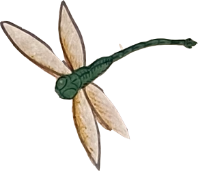The restoration of Rose Castle
David recalls what it was like at the early stages of the restoration project. To measure the castle and grounds with a tape measure would have been nearly impossible. At an early stage, it was agreed to have a digital survey carried out involving satellite technology.
Paddy had to put together a project that started from scratch because the castle needed a change of use from a private dwelling. That involves a vast quantity of paperwork and it took nearly two years to get the planning application through. As it’s a Grade I listed building, any plans had to be agreed with Historic England, and there were considerable discussions with them in terms of what was required to make it a habitable building.
At that time, very little had been done to the infrastructure of the castle. There was water penetration through the slate roofs and lead gutters, and the electrical and heating systems needed to be completely replaced. From a plumbing point of view it was a huge project. There were five bathrooms and now there are 16. Huge credit has to go to Paddy who did all the detailed design and drawings and was able to work out how it was possible to fit all those bathrooms in the castle. It’s harder than it sounds, especially when you don’t want to spoil the place.
For David and the rest of the team, especially Paddy and John, nothing seemed impossible. “We weren’t going to be beaten”, David says.
Often this meant going to great lengths to overcome challenges. For example, David spent many months over the five and a half year project tracking the original draining system to the castle, which is believed to go back to the 14th Century. The existing foul and surface water drainage systems have had to be completely re-designed and replaced.
There were no reliable drawings to work from, it was like making a jigsaw but without the picture. An electronic scanner was used to trace the ancient stone culverts and drains, some of which are more than 2.4 metres below the ground. This was carried out over the five acres of the castle and gardens.
Amongst many of the challenges, David also worked tirelessly to ensure the fireplaces in the main rooms of the castle were fit for use. There are now working fireplaces in the State Drawing Room (traditionally called the "Chinese Room"), The Lumley Room and the entrance hall of the castle.
Before starting work, if you lit a fire in the State Drawing Room, the smoke would come out in one of the bedrooms. The flues couldn't be taken down because some of them were in walls 1.8 metres thick. A method of lining the original flues had to be found, but first it was necessary to check if the existing flues were clear. On investigation, substantial jackdaws' nests were discovered so an old football filled with concrete with a hook cast into it was passed down each flue on the end of a rope. In addition a 360-degree camera was used to check the condition of each flue. Unsurprisingly, they found a lot of voids. David ended up sourcing a flue system manufactured in Budapest where the liner comes in a roll and is passed down the chimney before being expanded into a circular shape with compressed air and high-pressure steam to cure the liner.
The redecoration of the castle, a major part of the restoration project, has been very carefully carried out in specially formulated microporous, natural pigment, eco-friendly Edward Bulmer paint, with the choice of colour respecting the vernacular of the building. Many of the walls and ceilings, with the exception of the State Drawing Room, have been stripped of the old lining paper to reveal the original lime plaster, before being repaired and decorated.
Working on the restoration of the castle took five and a half years. During that time David describes the castle as his "second home", and without his wife Diana's patience and understanding such involvement would not have been possible.
David couldn’t tell you how many times he has been backwards and forwards over the last five and a half years. He has probably travelled thousands of miles if you added it all up. He should probably have retired 17 years ago, so most people are quite surprised when he is seen climbing up a scaffold!
Since the advent of Covid in March 2020, David Blair of Architects Plus UK Ltd, Carlisle, has also been involved with the restoration of the castle. David Blair and David Cowen took over the construction side of the project which included interpreting Paddy Ward's detailed designs, effectively making the designs work practically. The two David's, who have known each other for many years, are actively bringing the first phase of the restoration project to a conclusion. In addition it was eventually decided to construct a new sandstone entrance porch, which David Blair designed, and will be a very valuable asset to the future use of the Castle. The design and workmanship reflects and matches the vernacular of the existing building. David Cowen is greatly indebted to David Blair for helping to take hold of the reigns at short notice and fitting in with the team so well.
The ‘Guardian’ of Rose Castle
John describes David as the "Guardian of Rose Castle". So was David's involvement a calling of some kind?
"I do feel something sent me there", David says. "I know that sounds very supernatural but I think it was more than just because I lived in Dalston parish. I do think there's more to it."
Now the restoration of the castle is nearly complete, David feels the work has been carried out very sensitively and the castle has been beautifully restored. He reflects on what a huge team effort it has been.
At some stages in the contract there were at least 40 tradesmen working at Rose Castle. Add in the engineers, archaeologists, arboriculturalists, ecologists and conservators .... they are all part of a big team.
David hopes that the owners, John and Sarah, are thrilled with the end result. He has found it a great pleasure and privilege to be a small part of such a fantastic project, and a team whose skills have been more than tested and demonstrated. The restoration of this iconic building is of national significance.
David's involvement also extends to Rose Castle farm, which forms part of the castle estate. David and one of his sons, Timothy, are working on a project to improve the farm to enhance "the Rose Castle Experience" which will ultimately be quite unique because it will involve more horticulture, agriculture and forestry, including preserving the original farmstead buildings.

%20Sorted%20by%20Category/Chinese%20Room/DSC08684-HDR.jpg)

Comments: